#allegheny serviceberry
Text

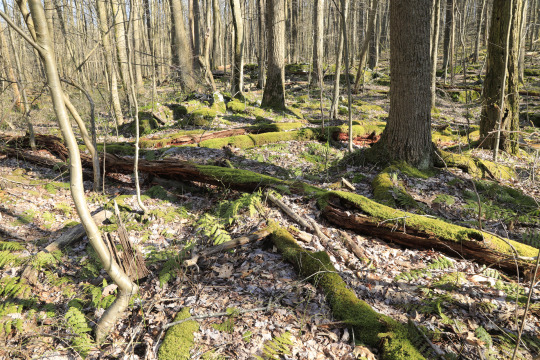
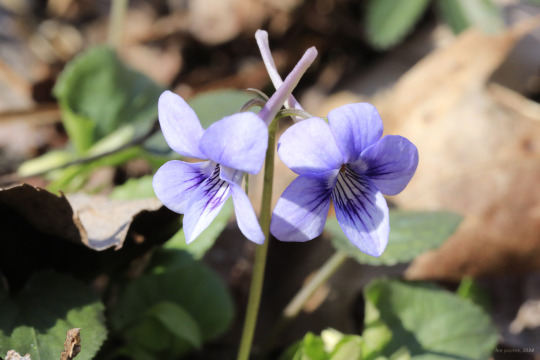
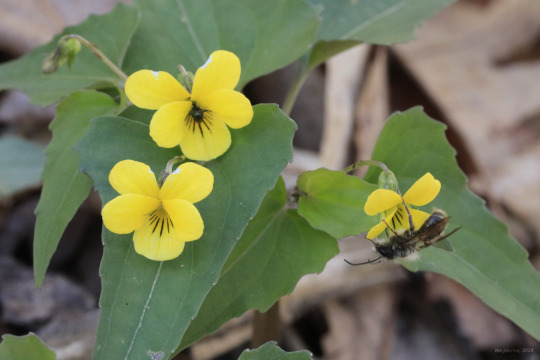
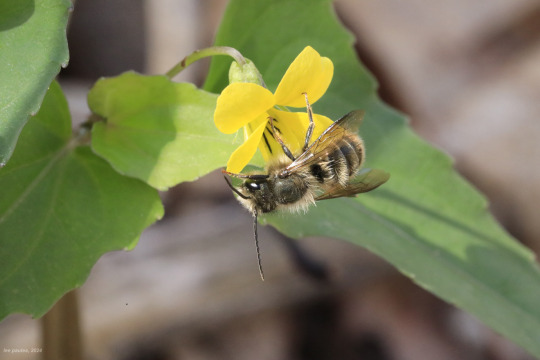

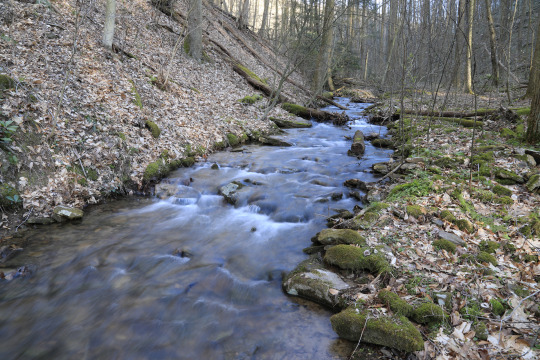
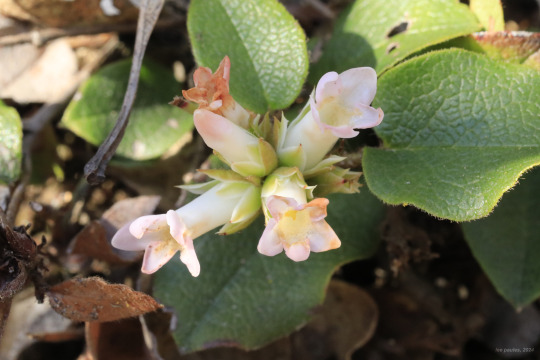
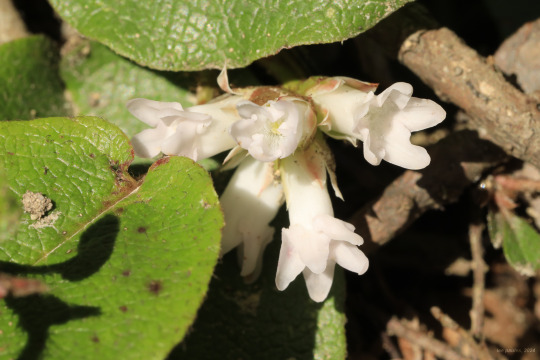
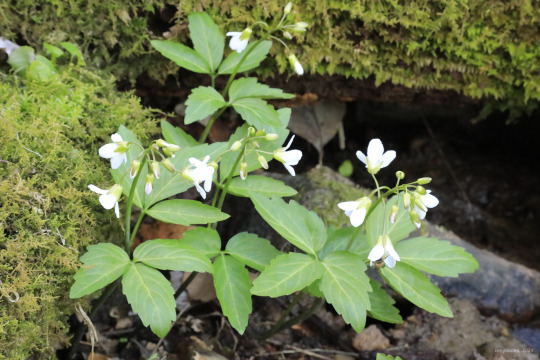
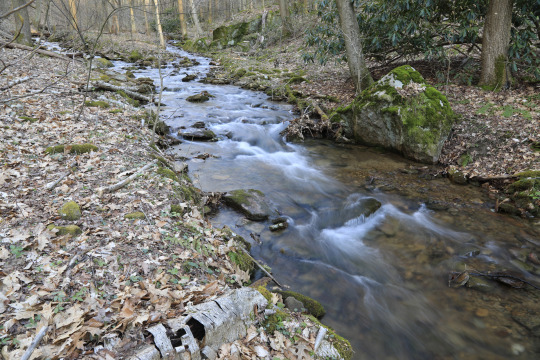
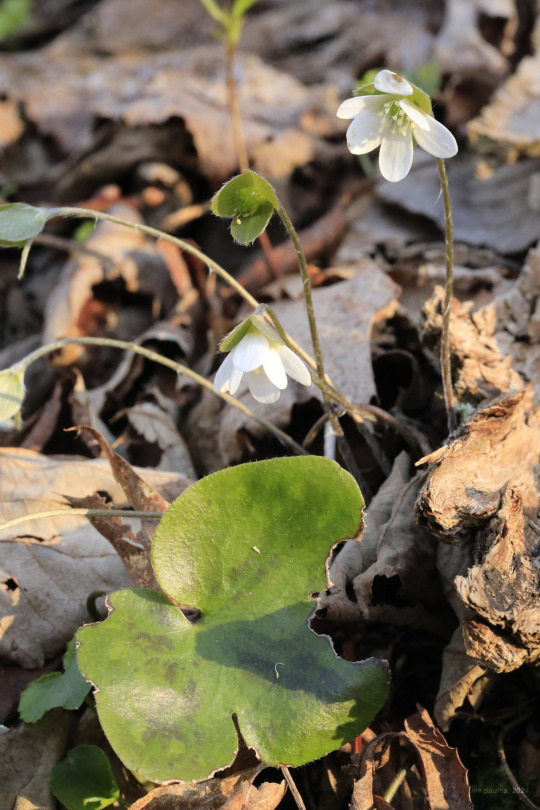
NC-WV is finally enjoying a dry, sunny spring weekend after weeks of near nonstop, flooding rain. That was all the incentive I needed to take my first long hike of the spring at Coopers Rock State Forest. The wildflower progression on top of Chestnut Ridge is running about 2 weeks behind that at lower elevations, but there were plenty of early spring beauties on display this afternoon. From top: Allegheny serviceberry (Amelanchier laevis); long-spurred violet (Viola rostrata); halberd-leaved yellow violet (Viola hastata); downy rattlesnake plantain (Goodyera pubescens); trailing arbutus (Epigaea repens), which is not herbaceous but a mat-forming, evergreen shrub in the health family; broadleaf toothwort (Cardamine diphylla), also known as two-leaf toothwort; and round-lobed hepatica (Hepatica americana), which prefers drier woods than sharp-lobed hepatica (Hepatica acutiloba), which I typically find growing on the rocky, calcareous slopes along the Monongahela River.
#appalachia#vandalia#west virginia#wildflowers#flora#spring#coopers rock state forest#chestnut ridge#allegheny serviceberry#long-spurred violet#halberd-leaved yellow violet#downy rattlesnake plantain#trailing arbutus#broadleaf toothwort#two-leaf toothwort#round-lobed hepatica
86 notes
·
View notes
Text




Then there's this Eastern Gray Squirrel (Sciurus carolinensis) dangling in the twigs for the some of the last native fruits on the woodlot ...possibly Allegheny Serviceberry (Amelanchier laevis))
#nature#my photography#wildlife photography#squirrel#woodlot#nature photography#gray squirrel#native plants#acrobatics
5 notes
·
View notes
Photo



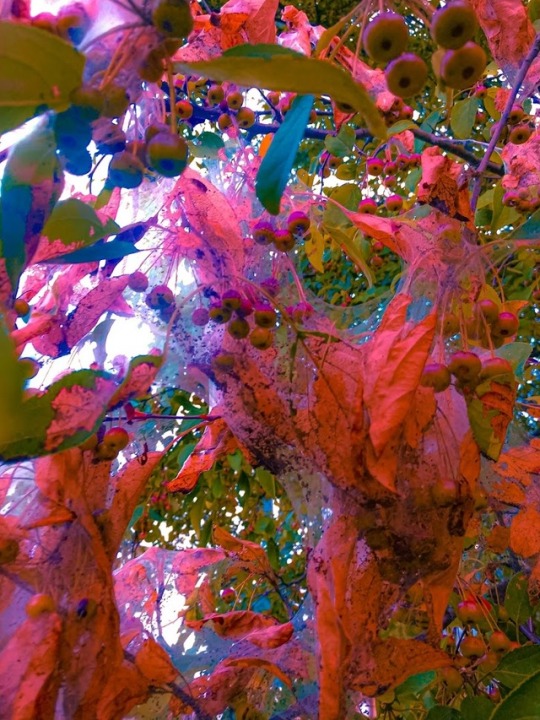
Is Bing crayons now? Even if it wasnt I still wouldnt use it.
#Aesthetic#aes#saturated colors#selfie#berry#berries#cottage core#cottagecore#fall webworms#Eastern tent caterpillars#webs#serviceberry#serviceberries#Allegheny Serviceberry#Amelanchier laevis#grass
13 notes
·
View notes
Photo

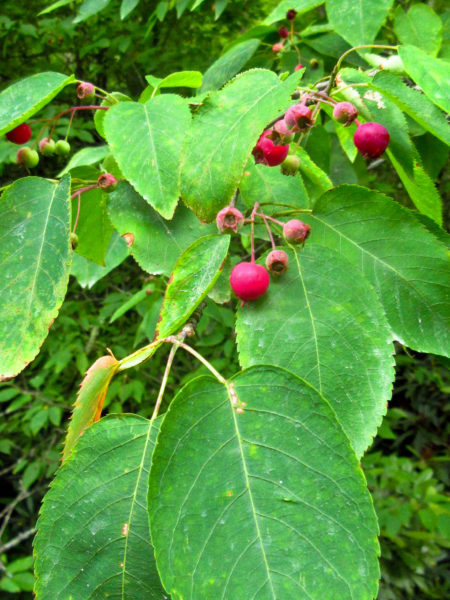
Daily Tree: amelanchier laevis
In English please: Smooth Shadbush, Smooth Serviceberry, Allegheny Serviceberry
Grows: eastern half, continental US
Wikipedia page: here
Photo 1: plants . oaklandnursery . com/12130001/Plant/17769/Lustre_Allegheny_Serviceberry/
Photo 2: https : // wildridgeplants . com/shop/amelanchier-laevis-mooth-serviceberry/
#Daily Tree#Trees of the US#Trees#Amelanchier Laevis#Smooth Shadbush#Smooth Serviceberry#Allegheny Serviceberry
37 notes
·
View notes
Photo

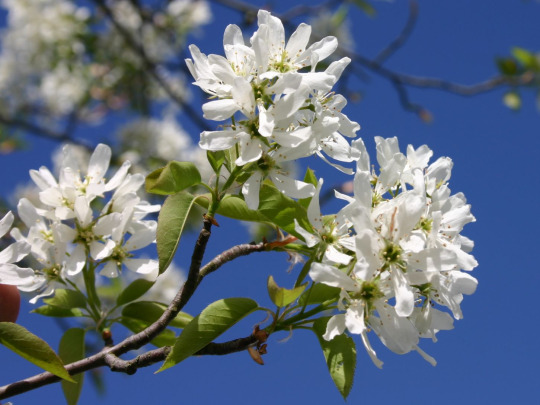

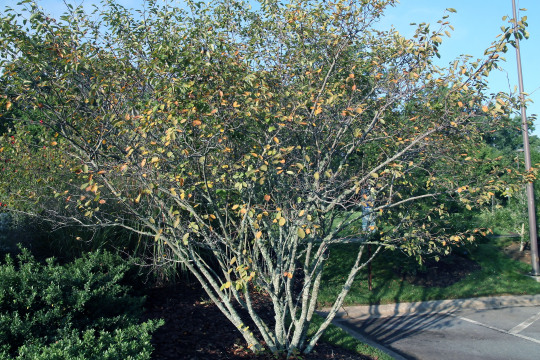
Smooth serviceberry (Amelanchier laevis) has edible, delicious fruit. The correct way to eat the fresh berries is to gather as many as possible into both your hands and to cram them all into your mouth. Then you bite down. I eagerly await the spring for this purpose. They taste like a mix of apples, blueberries, cherries, and grapes. You can also make jam of them or add them to smoothies.
More info on Plants for a Future.
#native Ontario plant species with edible parts#deciduous trees#flowering plants#flowers#edible plants#native North American species#plants I want#smooth serviceberry#Allegheny shadberry#Amelanchier laevis#serviceberries#Canadian fruit
4 notes
·
View notes
Photo
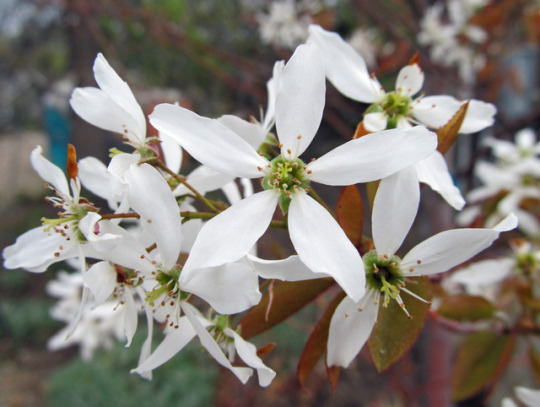
Allegheny serviceberry (Amelanchier laevis ‘Cumulus’)
#Allegheny serviceberry#serviceberry#sarvisberry#Amelanchier#Amelanchier laevis#botany#spring flowers#flowers#flowering#phytocurious
44 notes
·
View notes
Text
the audubon society plants list finally loaded kids let’s do a brief (haha) cold medicine induced analysis of what the heck they’re recommending for my local area (western PA) and whether it could grow in my shitty yard (if i’m unfamiliar with it i’m skipping it just to be fair)
It’s alphabetical by common name I guess so ok i’m doing this under a cut I supppose
Allegheny Monkey Flower (Mimulus ringens) - this plant is indeed one you see kinda often...... on the very edge of the Allegheny river literally growing as a marginal plant. not ideal unless you got a pond or live in a swamp
Allegheny Serviceberry (Amelanchier laevis) - this is one you see growing in the woods near swamps so nope, not in this drought hellscape of a yard
Alternate-Leaf Dogwood (Cornus alternifolia) - another understory moisture loving tree/shrub... next
American Beech (Fagus grandifolia) - again, moisture loving woodland tree. European Beeches are overall more drought tolerant so if you see a beech in the city or suburbs, it’s probably not an American Beech. also, in my area, you can’t find an American Beech that isn’t suffering from Beech bark disease unfortunately
American Black Elderberry (Sambucus nigra ssp. canadensis) - These are good plants and grow all along the shady woodsides here. Same issue though, they like moisture and at least partial shade. And the ornamental varieties you can find at garden centers tend to be European hybrids with fancy leaves
American Pokeweed (Phytolacca americana) - shadey woodland lad again. They’re also very very weedy idk that anyone would want this in their garden.
American Witch-Hazel (Hamamelis virginiana) - a good plant. still needs moist soil but I think would probably be ok. It looks really cool planted near grasses because it blooms in fallish
Big Bluestem (Andropogon gerardi) - finally a prairie plant!! it’s my boy big bluestem. unfortunately, it can look kinda wild and weedy for a suburban garden unless you do it right.
Black Chokeberry (Aronia melanocarpa) - handsome, good, nice berries, good fall foliage, excellent choice, prefers full sun but still likes it a bit moist and will drop all its bottom leaves and turn fall colors early if you underwater it oops i definitely never was responsible for that at work with b&b aronias.
Black Raspberry (Rubus occidentalis) - oh word we got these in our garden and the birds actually like the red ones better rip
Black-Eyed-Susan (Rudbeckia hirta) - that’s right babey it’s Susan. this baby will reseed all day in sun or shade and birds love that shit. downfall is the species plant is prone to rust and cultivars do a bit better.
Butterfly Milkweed (Asclepias tuberosa) - Good and Wholesome friend. I don’t recommend this as baby’s first milkweed though because they can be slow to establish and kinda disappointing and small and if you get caterpillars on it the first year, it may not survive.
Cardinal-Flower (Lobelia cardinalis) - my mom actually has managed to keep a Lobelia alive in the shadiest, wettest part of her garden but listen...... this is a marginal or swamp plant. Put it in the swamp.
Common Buttonbush (Cephalanthus occidentalis) - it’s the bae
Common Milkweed (Asclepias syriaca) - do not try to buy this as an established plant at a garden center, they will look at you funny and point at the roadsides. Either wait until fall seedpod time and go harvest some or buy some seeds online
Common Snowberry (Symphoricarpos albus) - I had no idea this was native actually but it’s cool because it gets big white ORBS
Common Winterberry (Ilex verticillata) - it’s got stems. it’s got berries. it can grow wherever. what more could you want??? english holly who?????
Common Yarrow (Achillea millefolium) - actually often confusingly hybridized with European Yarrows so no one knows whether they’re ~true~ natives or not. Who cares they will survive anything except a swamp. They will live in a drought ass no topsoil suburban neighborhood like a CHAMP. they were made for this.
Dense Gayfeather (Liatris spicata) - just including this one because it sounds like a Good Omens joke
Flowering Dogwood (Cornus florida) - put that baby tree back in the moist woodlands where it came from or so help me
Gray-Head Mexican-Hat (Ratibida pinnata) - ayyy prairie plant, though this isn’t the species you commonly see for sale at garden centers and this one is decidedly less phallic than R. columnifera so that’s a bummer.
Great Blue Lobelia (Lobelia siphilitica) - we half killed this at work because it doesn’t love pot culture or me but someone still bought it all. don’t put this in your dry ass suburban neighborhood or she will hate you too
Northern Bayberry (Morella pensylvanica) - i call this myrica pensylvanica but whatever. birds love it. so do japanese beetles unfortunately
Pennsylvania Sedge (Carex pensylvanica) - it’s a sedge
Red Columbine (Aquilegia canadensis) - unlike other columbine, this bitch likes full sun and probably will grow and reseed anywhere
Redbud (Cercis canadensis) - another understory-ish moisture loving tree but a lot of the cultivars do just fine in the middle of sad suburban yards. also good. blooms wherever it wants while nakey.
Scarlet Beebalm (Monarda didyma) - you will only ever find cultivars of this but who knows, they may slightly more mildew resistant for at least a little while
Shag-Bark Hickory (Carya ovata) - big, handsome, looks like it’s seconds away from falling apart at all times. just how i like my men.
Smooth Oxeye (Heliopsis helianthoides) - please let the one in my mom’s yard know that it’s meant to survive dry soils in full sun
Spotted Beebalm (Monarda punctata) - my favorite bee balm but doesn’t have the Wow factor of M. didyma cultivars. It likes the sun and dry though
Spotted Touch-Me-Not (Impatiens capensis) - wholesome friend! But no one in their right mind would plant this on purpose in their garden also it would be wilt-city out here in the drought ass topsoil-less surburbs. these babies used to grow between the greenhouses and I used to water them like some kinda of bleeding heart
Swamp Milkweed (Asclepias incarnata) - she can actually live pretty well in the middle of drought ass suburban yard and spreads easily by seed but expect half the lower leaves to yellow and drop off by midsummer. poor darling. put her back in the swamp. This is the most reliable commerically available milkweed you will find because it takes to pot culture way better than other milkweeds (rip all the butterfly weed horticulture land kills yearly)
Sweet-Bay (Magnolia virginiana) - more like sweet bae am I right???? actually she wouldn’t live in my yard. needs some afternoon shade and moist, rich soil.
Sweet-Scented Joe-Pye-Weed (Eutrochium purpureum) - It’s Joe!!!!! Will grow all over. Will get 7 feet tall with massive flowers just because he can. Will grow in a swamp, will grow on a hillside, will grow beside Wal-Mart. Joe don’t care. I still call it Eupatorium because I resist change and actually I’m not 100% sure if this or E. fistulosum that is most common around here.
Tall Tickseed (Coreopsis tripteris) - coreopsis is a really popular genus to see on native plant lists but there aren’t many native to my area of Pennsylvania and you won’t find anything but C. verticillata or C. lanceolata cultivars in garden centers. BUt apparently this bitch can get NINE FEET TALL i’m swooning
Trumpet-Creeper (Campsis radicans) - ok, i’d avoid planting this baby unless you know exactly what you’re doing. she may be native but she can and will do her best to eat your home and foundation and your garden in general. she will do her rhizomey best to runner away from you into the wilderness. fun to grow across a pergola though but she will EAT your TREES and your HOME
Virginia-Creeper (Parthenocissus quinquefolia) - ????? no one is going to deliberately plant this, Audubon Society
Wand Panic Grass (Panicum virgatum) - this is why I think making these lists with common name first is so hilarious because what????? I know this as “Switchgrass” which sounds nice and normal wtf is a Wand Panic Grass. that’s what i’m going to call bad bottom dysphoria episodes from now on
White Turtlehead (Chelone glabra) - likes it wet and shaded so wouldn’t do nice in my yard. also why even BOTHER planting this plant unless you’re going to do the cultivar ‘Hot Lips’ (jk probably the white one is more native insects friendly)
Wild Hydrangea (Hydrangea arborescens) - she’s cute and all but if you want a Hydrangea just go full cliche H. paniculata cultivar or nothing. This plant would hate my whole entire yard and then die
anyway, that’s all the plants on the list I felt like rambling about on this fine Tuesday morning. Overall, idk how helpful a list like this would be for first time gardeners, because they would run into the issue of not being able to actually their hands on most of these plants.
Very few on the list would actually be suitable for growing in a new suburban neighborhood or an urban garden. This is an area naturally full of sensitive, woodland, rich, moist soil-loving plants... and unfortunately, those areas are disappearing more and more under new developments and the native pollinators and wildlife are going along with them.
#i really just did that and rambled about a whole lot of plants for no good reason#long post#idk what to tag this as
19 notes
·
View notes
Text
got seeds coming now for
Canadian Serviceberry (Amelanchier canadensis), Allegheny Serviceberry (Amelanchier laevis), a new heirloom Seaberry (Hippophae rhamnoides) variety to cross with my current one, Sochan (Rudbeckia laciniata), and Virginia Waterleaf (Hydrophyllum virginianum)
During my second year (last year) of starting seeds in an outdoor nursery-like environment I did enough different things that I feel I’ve a significantly better understanding of how to propagate a variety of woody perennials from seed
I’m excited to add these foods to the little suburban food forest system.. Now that I also have Hopniss (Apios americana) successfully growing there and a variety of edible plants coming up on their own, it feels like it’s getting closer to the point when it will become more about harvesting biomass than about inputs. So far this year I haven’t had to water anything except new plantings for a day or two after planting. but I have also let things grow in much more thickly than previous years so the soil is not exposed at all, from the combination of groundcover plants and compost/mulch on the surface.
6 notes
·
View notes
Text
A Pittsburgher Undertaking Native Tree, Shrub, and Forest Restoration on a Small Budget

Our guest blogger notes that he has no formal training in gardening or botany which perhaps makes this an even more inspiring story. In the past two years this one individual (with the help of a friend) has planted 1,500 native trees and shrubs as well as numerous native forbs on about 15 acres of his own property and that of willing neighbors. His goal is to attract pollinators such as native songbirds, butterflies, moths, and other insects. His plans include planting at least 500 more native trees and shrubs each upcoming year. We invited him to share his experience, written in his own words, on this ambitious endeavor as part of a blog series inspired by our new exhibition We are Nature: Living in the Anthropocene.
Motivation
My parents taught me bird watching starting from my preteens. I finally saw my first pileated woodpecker (Brookgreen Gardens, South Carolina) at age 14. Canoeing through the Okefenokee swamp in southern Georgia/northern Florida in the spring, we would see brilliant yellow/orange-ish prothonotary warblers flitting some 20 feet away among the knees of towering cypress trees and also the flocks of honking sandhill cranes overhead. One of my daughter’s middle names is Dendroica for the warblers. The other daughter is named after the tallest tree species (if I am pressed, I am not sure if it is for giganteum or sempervirens; my father calls her “little twig”). And my son is named after the last name of the most famous modern biologist. This project for me is about giving back. I am no expert about what I am contributing here. I welcome corrections and comments. The other motivation is that this project is doable with not much money, and anyone could do this. If you do not have the land, find a willing neighbor/friend who does, and start planting natives and removing invasive plants on their property.
Pittsburgh and Western Pennsylvania
Pittsburgh and Western Pennsylvania are marvelous ecological areas and the birth areas of noted environmentalists such as Rachel Carson and Edward Abbey. We get plenty of rain, even in the summer, which means we do not have the droughts observed in other parts of the country. Western Pennsylvania is riddled with creeks, which are ample places to plant native trees and shrubs that will never have to be watered as the creek riparian zone will take care of them. We also have clay soil (I know I will swear about the slate rocks when digging holes with a posthole digger by hand), which holds moisture and minerals. Lots of things can grow here. Because of topography, there are many places where houses cannot be built, so there is ample space for native trees, shrubs, and wildflowers.
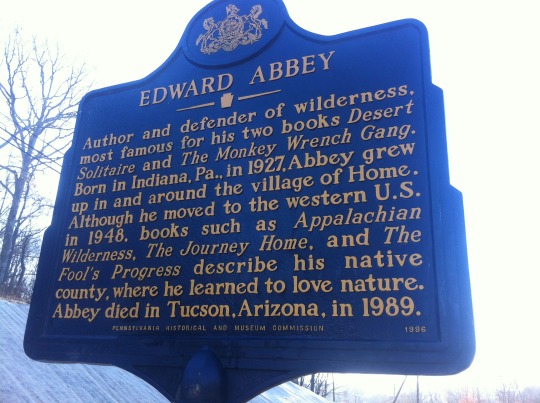
Pittsburgh National Park
We can think of Pittsburgh as “Pittsburgh National Park,” and the city already supports a huge biomass of bird populations such as the thousands and thousands of crows wintering here each year. If we would just plant lots and lots of flowering trees such as the dogwoods and redbuds and hawthorns and shrubs such as northern bayberry (Myrica pensylvanica), we could increase the habitat to attract more beautiful songbirds such as rose-breasted grosbeaks, cedar waxwings and scarlet tanagers to spend more of their time here. I grew up in the Piedmont area of North Carolina, and every spring we would be greeted with the explosions of the dogwoods and redbuds that are endemic in the woods. The same could be done here with our hillsides that are refractory to building houses but not to populating them with dogwoods, redbuds, serviceberries, and hawthorns.
Growing native plants in large clusters
I am no expert on native plants and have consulted with many people as well as just Googled information. Somewhere I had read of a research study in which the authors determined that the planting of 250 wild flowers of one species was necessary to get another butterfly species to appear. A guiding principle is to identify multiple high wildlife value specimens, and then plant lots and lots of each of those species. (I should note that most wildlife management principles state that diversity is better than lots of one species; in my case I am promoting clusters of diversity). If we all wanted to purchase watermelons, but the markets would only keep a few in stock, we would eventually stop making plans to go to a market with the purpose to get a watermelon. And if a bird encounters not one serviceberry tree, but instead a forest of 300 serviceberry trees, we may instead have enticed a flock of these birds. For example, I have observed a flock of cedar waxwings rushing back and forth among a cluster of black cherry trees to eat the fruit. A solitary tree would get less activity. With sufficient establishment of native trees, shrubs, and wildflowers, we may entice birds to nest in the area. The Powdermill Nature Reserve (part of Carnegie Museum of Natural History) Bird Banding project has documented the precipitous decline of songbirds, with some declines as much as 70 percent over the last 50 years. We can repopulate our yards and our woods and our cliffs along the rivers and highways with native species that will restore habitats and help stabilize the populations of the songbirds that are left and perhaps even help grow them.
Early in this project I was fortunate to get a state of Pennsylvania biologist on the phone, and he emphasized that I should concentrate on plant species that use lots of water as these species will generate lots of biomass. With the drainage creek behind by house, I am inspired to plant along its sides every step of its 1000 feet. I am on 2 acres plus. I also have multiple agreeable neighbors on similar or larger acreages, and all these neighbors have acres of woods that they leave alone and have allowed me to remove the invasive trees, shrubs, and grasses and plant the hundreds of native trees, shrubs, and forbs. I am inspired by the biologist at Indiana University who mowed an old overgrown field in Bald Eagle State Park to set back succession to an earlier stage of growth. The mowing was done in wide strips so that as those areas grew back they could mow additional areas. In the following spring he was able to observe several pairs of nesting golden winged warblers, a songbird species that has had a precipice decline in the last 50 years. While I do not expect such spectacular success, one can use the Allegheny County population data from eBird to gauge which songbird species we may be able to attract to nest in the area. In the woods behind my house, I have seen wood thrushes and hooded warblers sporadically each year. Perhaps the growing of a smorgasbord of native trees, shrubs, and forbs will entice them to lengthen their stays.
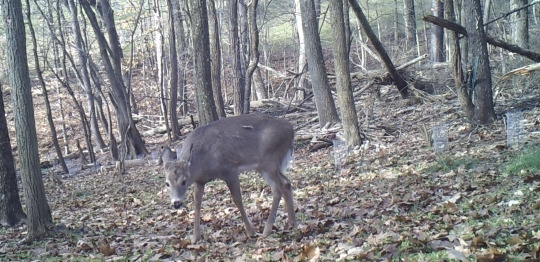
Bambi
One white tailed deer consumes 200 pounds of leaves and twig matter each month, roughly a ton per year. Typically, when one sees one Bambi, there are another 4 browsing within 50 feet, which is the equivalent of 5 tons of leaf and twig destruction each year. As a gardener, I think of Bambi as rats with long legs. While Bambi has evolved to eat everything, they have yet to develop a taste to eat galvanized steel. For this reason, metal cages are used to protect any plant at risk for Bambi. We have made metal cages from half inch mesh hardware cloth, chicken wire and 16 gauge welded wire fencing. Cages range from 1 foot high to 2 foot high, to 3 foot high to 6 foot high with diameters of 6 inches (18 inch linear fencing made into a cylinder) and 8 inches (24 inch linear fencing made into a cylinder). I am not planning to remove the cages. If I had more funds, the cages would be typically 8 feet tall and 2 to 3 feet in diameter as is done at the Pittsburgh Botanical Gardens as well as at Nine Mile Run in Frick Park.

507 trees and shrubs planted in November 2017
In November 2017, we planted
100 northern bayberry (Myrica pensylvanica) seedlings, one to two feet in lengths (www.coldstreamfarm.net)
100 Norway spruce (although it is not a native, Norway spruce is recommended by the Penn State Extension, and I hope to someday attract crossbills which also fly over to Norway) four-year transplants, 12-15 inches in height with 12-15 inch long roots (Mussers Nursery, Indiana County, PA)
100 red-twig dogwood (Cornus sericea; www.coldstreamfarm.net) two to three foot in length seedlings
102 two to three foot long pagoda dogwood stakes (Cornus alternifolia; www.wholesalenurseryco.com/product/pagoda-dogwood-stakes/)
100 eastern white pine four-year transplants, 12-15 inches in height with 12-15 inch long roots from Mussers
5 black willows from Mussers
Soon after planting, 4 inch by 6 inch rectangles of paper were folded over and then stapled in place over the terminal buds of the white pines to protect them from winter browsing by the deer
In spring 2017, I got 300 six-year eastern white pine transplants (Mussers Nursery) that had roots of 2 feet in length. It took me multiple weekends and after work hours that spring to manually posthole the holes for these six-year transplants. Rotting in the basement while waiting to be planted, at least 100 trees did not survive the planting process/the summer.
I learned my lesson. I purchased a gas-powered auger with a 6-inch diameter by 30 inch long bit from Home Depot online. The 6-inch bit is much easier to dig with than the 8-inch bit. My volunteer and I and the gas-powered auger were able to dig over 100 30-inch deep, 6-inch diameter holes in just a couple of hours. This time we got four-year white pine transplants with only 15-inch length roots and planted them the same day we picked them up. The eastern white pines will grow to 100 feet and the spruce trees should grow to 50 to 75 feet. It is like planting an ‘instant forest’. Half inch mesh two-foot hardware cloth cut into two foot sections to prepare cylindrical cages were used to protect the red-twig dogwood seedlings. Each cage was buried about 4 to 6 inches to prevent deer and weather from knocking over the cage. I purchased 4 rolls of 100 feet by 6 feet of 14 gauge welded wire fence (Deacero Steel Field Fence 6 ft. H x 100 ft. L (7745)) from Ace Hardware, and what with shipping cost a total of about $500. We made 50 cages from each roll using tin-snips. 102 cages were used for the planting of the pagoda dogwood cuttings. About 12 inches of these 6 foot cages were submerged into the hole to prevent deer and weather from knocking them over. Native dogwoods other than the common flowering dogwood (Cornus florida) were chosen because of the flowering dogwood’s predilection for Anthracnose, a fungal infection that can make the tree look ugly and potentially die. The pagoda dogwoods were planted in moist soils, and the tall cages should protect them from the deer and allow the dogwood to eventually achieve 20 foot heights.

The costs for planting in November 2017 The 100 spruce, 100 white pine and 5 black willows from Mussers cost $341 plus the cost of gas driving to pick them up. The 100 red-twig dogwood ($146 plus shipping) and the northern bayberry ($172 shipping included) were from Cold Stream Farm. The 102 pagoda dogwood stakes shipped from a Tennessee wholesale nursery were $187. The 200 foot of 2 foot hardware cloth to make the 100 cages for the red-twig dogwoods was about $140. And the pagoda dogwood cages cost about $250.
So the cost of planting 507 trees and shrubs was about $1250 or about $2.50 total per plant which overall is economical. Labor is considered to be voluntary and is not included in these calculations. On the other hand, I am still living in my old unfixed house with my ancient toilets of which one takes 20 seconds to flush and is relegated only to flushing liquids. In 2015 when I got the house, I had repair insurance for the first year though I was unable to convince a plumber that a toilet that took 20 seconds to flush needed to be replaced under that home repair insurance plan. My skimping on fixing my old house allows me the funds to plant a forest that will live for ages.
Invasive plant garlic mustard (Alliaria petiolata) removal With garlic mustard, I like to pull the first years of this biennial plant whereas others suggest pulling the second year flowers and leaving them to dry and die and decompose. Rosettes are hand pulled and can be left to dry out and die. First year plants including the entire root can be pulled after rains that softened up the grounds. The removed plants are placed in the crooks of tree branches to allow the garlic mustard to dry out and die and decompose.
Example future project: American woodcock project One section of the woods is fairly open with a couple of acres of privet with moist soil and the idea is to replace the privet with alder (300 alder seedlings can be purchased from Mussers Nursery for $150 total) to improve the area to possibly attract woodcock so that the birds have space for their mating dances and space to look for earthworms. We have a heavy duty hand weedy-shrub pulling device (Pullerbear) which can be used to pull invasive shrubs such as privet, multiflora rose, and Japanese barberry out of the ground.
Some sources of information on the web
Landscaping for Birds - A go to website from Cornell Ornithology. I use this website to help decide which classes of trees and shrubs to plant in mass.
Beechwood Farms - Audubon Society of Western Pennsylvania. Beechwood Farms has an excellent native plant nursery.
eBird - (dates and populations and locations) of birds in Allegheny County from ebird.
PSU Extension Lawn Alternatives - One of many excellent sites from Penn State Extension.
Garden Planner Dripworks - Where I get my drip irrigation supplies.
Prairie Moon - This is where I purchase about a hundred-dollars of native forbs and shrub seeds each January.
Howard Nursery - Inexpensive trees and shrubs that can be ordered each January through early March from Howard Nursery. Presently have been getting grey dogwood and smooth alder seedlings from them. Recommended to order in January as soon as the website opens as they run out.
Musser Forests - Mussers Tree Nursery. Being only about a 75-minute drive from Pittsburgh.
Cold Stream - Cold Stream Farm wholesale nursery. Relatively inexpensive source for northern bayberry, dogwood shrubs, buttonbush seedlings and more.
Audubon Native Plants - Audubon native plants database. For each plant, there is a listing of which native birds are attracted.
Wildflower - Wildflower database
This blog series depicts Pittsburghers and their commitment to improving the local environment to celebrate our new exhibition, We are Nature: Living in the Anthropocene. Each blog features a new individual and explains the ways in which they are helping in areas of sustainability, conservation, restoration, and climate change. This blog was written in the author’s own words. Any opinions in this blog are the author’s own and do not necessarily represent that of the museum.
45 notes
·
View notes
Text
0 notes
Photo




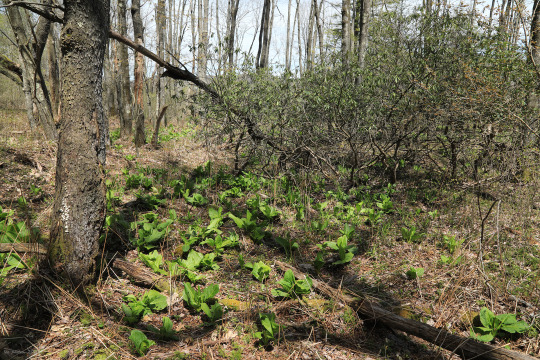
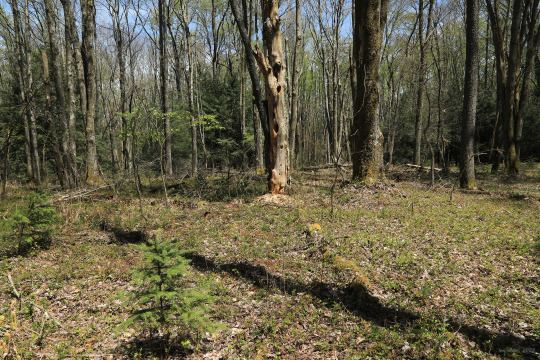


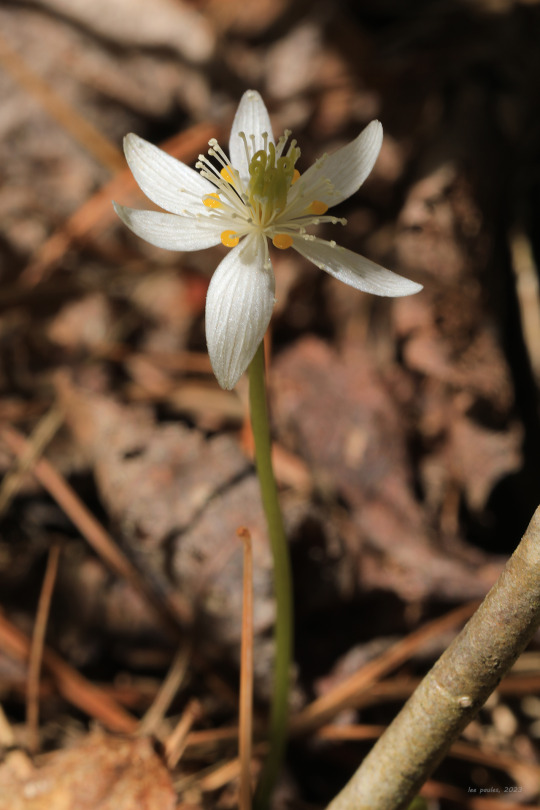
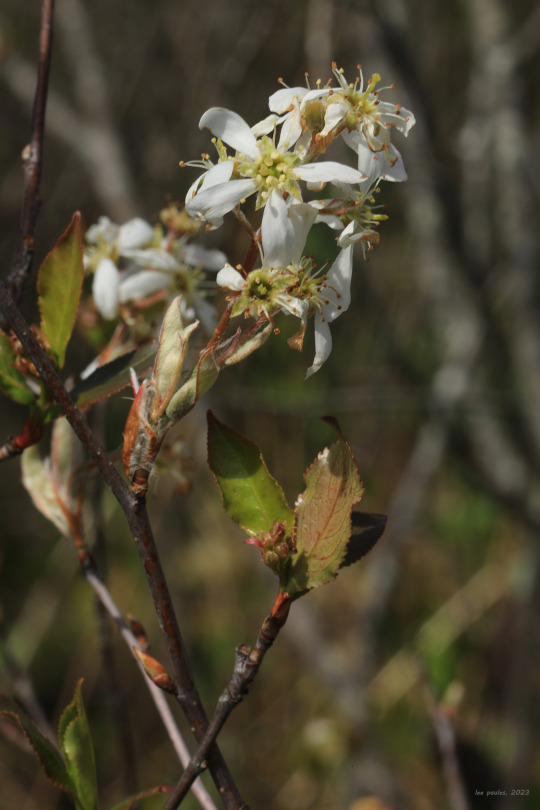
Winter made an encore appearance to the Central Appalachians this past week, with some locations above 3000 feet receiving a foot or more of snow. By Friday, all that nasty cold and freezing precipitation had moved out and spring returned with a vengeance today, with temperatures in the upper sixties to low seventies. It was a perfect day to explore the ancient sphagnum bog at Cranesville Swamp Preserve, whose boreal wetlands community owes its existence to the cool temperatures provided by the frost pocket in which it nestles. From top: small cranberry (Vaccinium oxycoccos) and eastern teaberry (Gaultheria procumbens) grow from a sphagnum hummock; lowbush blueberry (Vaccinium angustifolium); eastern skunk cabbage (Symplocarpus foetidus) growing in a damp spot near the bog’s edge; fringed polygala (Polygaloides paucifolia); dwarf ginseng (Panax trifolius); goldthread (Coptis trifolia); and downy serviceberry (Amelanchier arborea).
#appalachia#vandalia#west virginia#maryland#spring#may#allegheny mountains#bog#peat bog#shagnum#cranesville swamp#cranesville swamp preserve#small cranberry#eastern teaberry#lowbush blueberry#eastern skunk cabbage#fringed polygala#dwarf ginseng#goldthread#downy serviceberry#flora#wildflowers
97 notes
·
View notes
Photo

20180403 Stone Mountain State Park North Carolina
Allegheny Serviceberry Amelanchier laevis
0 notes
Photo
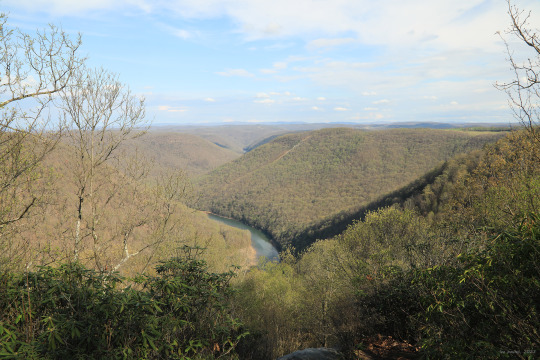

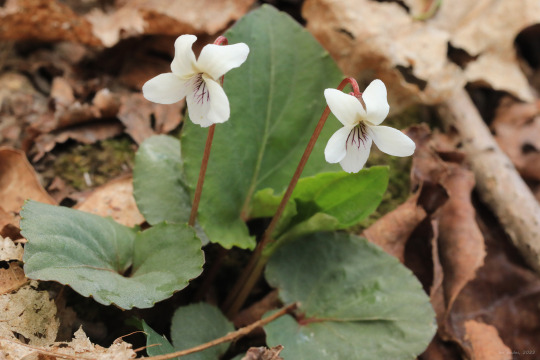





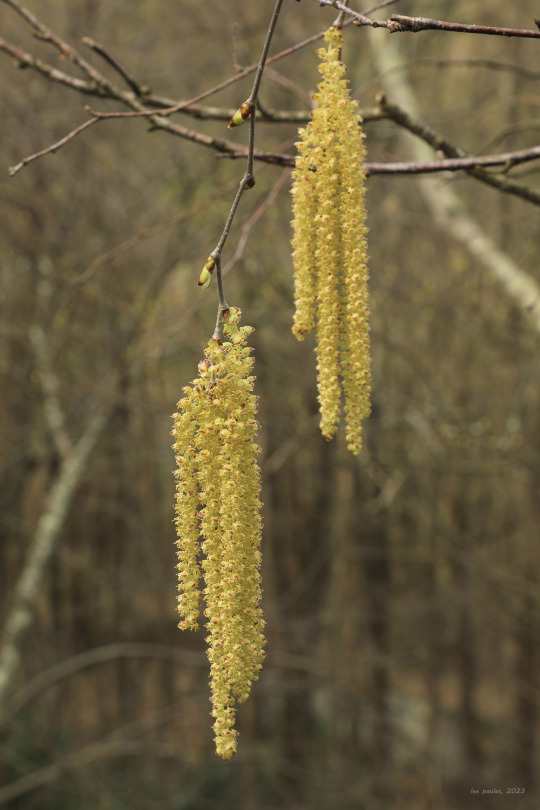
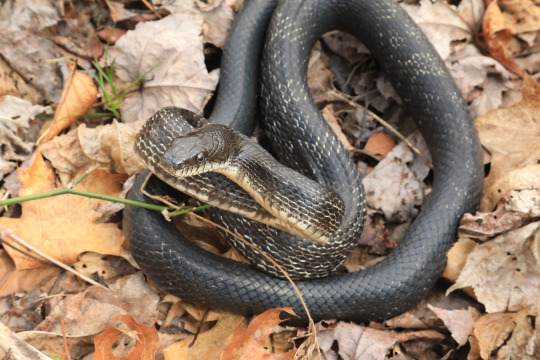
What a gorgeous afternoon for a Mid-April hike in the Cheat River Canyon. Spring’s delicate treasures were out in full force. From top: halberd-leaved yellow violet (Viola hastata); sweet white violet (Viola blanda); broadleaf toothwort (Cardamine diphylla); Carolina spring beauty (Claytonia caroliniana); bloodroot (Sanguinaria canadensis); common blue violet (Viola sororia); Allegheny serviceberry (Amelanchier laevis); sweet birch (Betula lenta) catkins; and a cranky Allegheny rat snake (Pantherophis alleghaniensis) newly out of hibernation.
#appalachia#vandalia#west virginia#cheat river#cheat river canyon#chestnut ridge#snake hill wildlife management area#spring#april#wildflowers#reptile#snake#allegheny rat snake#eastern rat snake#halberd-leaved yellow violet#sweet white violet#broadleaf toothwort#two-leaf toothwort#crinkleroot#carolina spring beauty#bloodroot#common blue violet#allegheny serviceberry#sweet birch#black birch
123 notes
·
View notes
Photo
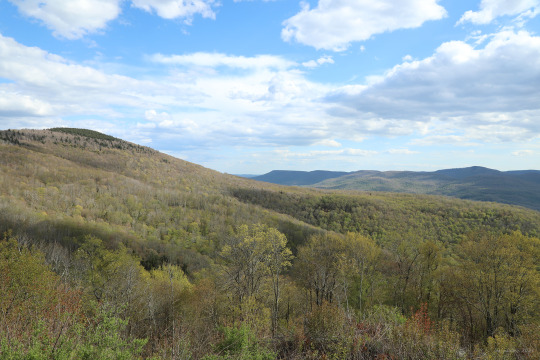





The Highland Scenic Highway winds for 22 miles through some of the prettiest and wildest mountain country in Central Appalachia. Most of the drive from Richwood, West Virginia to the intersection with US Route 219 near Marlinton is through the Monongahela National Forest. I made my first spring pilgrimage up the highway yesterday to check out the marsh marigold at Cranberry Glades, now at peak bloom. But there are so many other wonderful places to visit, including Red Spruce Knob (top - to the left in the photo), the highest point along the highway. Early bloomers on the mountain include Allegheny serviceberry (Amelanchier laevis) and hobblebush viburnum (Viburnum lantanoides), also sometimes referred to as witch-hobble. Hobblebush was so named by old-timers because its wiry, tough roots often grow up through trails and impede travel. On top of the mountain, in the old red spruce forest, multitudes of yellow clintonia lily (Clintonia borealis), also known as bluebead lily, are pushing up and will start to bloom within the next couple weeks. I plan to travel back to the mountain around Memorial Day to check out the amazing wild lilies and orchids that are now coming in droves.
#appalachia#vandalia#west virginia#spring#flora#wildflowers#highland scenic highway#monongahela national forest#red spruce knob#amelanchier#allegheny serviceberry#viburnum#hobblebush#witch-hobble#clintonia#yellow clintonia#bluebead lily#wv route 150
49 notes
·
View notes